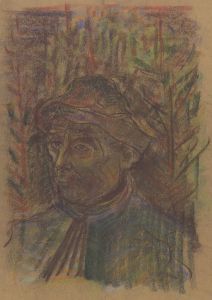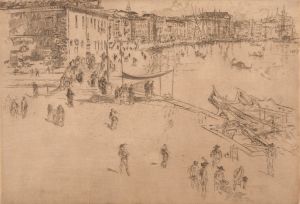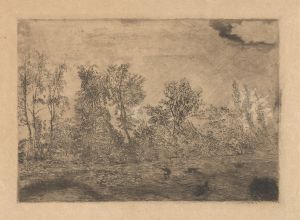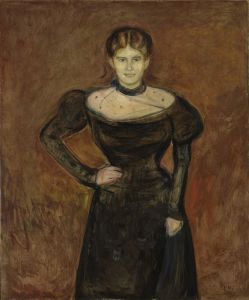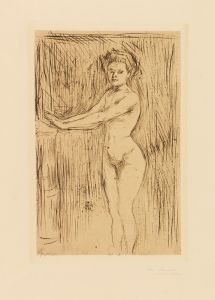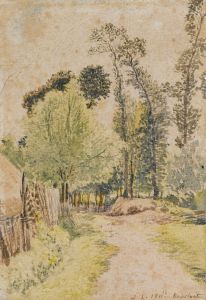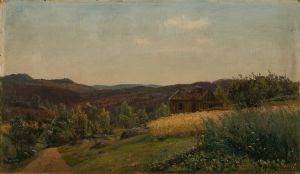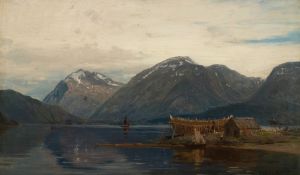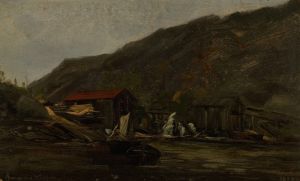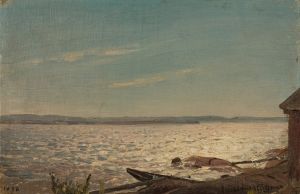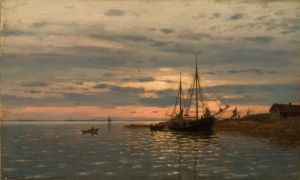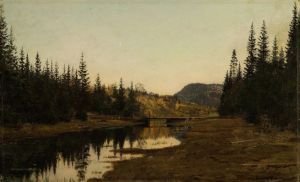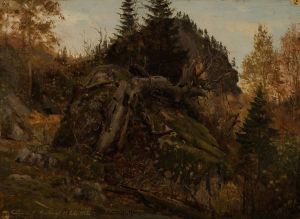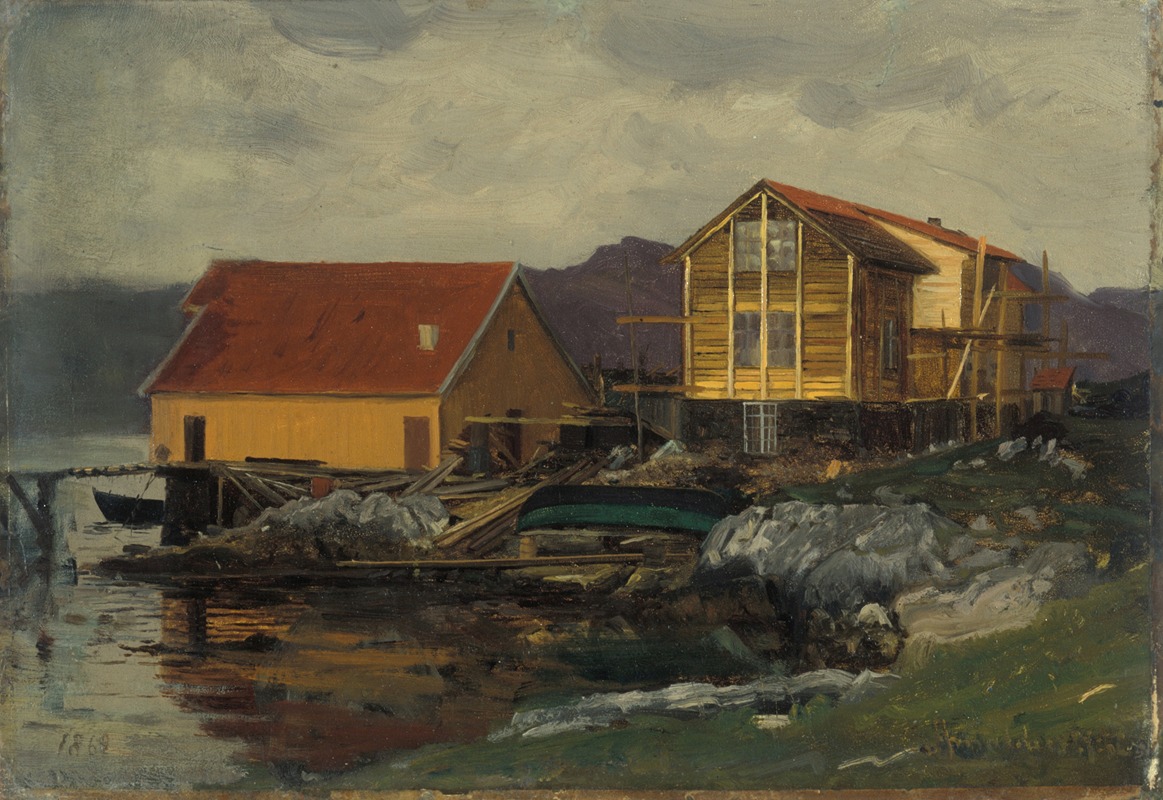
Etter øsregn
A hand-painted replica of Amaldus Nielsen’s masterpiece Etter øsregn, meticulously crafted by professional artists to capture the true essence of the original. Each piece is created with museum-quality canvas and rare mineral pigments, carefully painted by experienced artists with delicate brushstrokes and rich, layered colors to perfectly recreate the texture of the original artwork. Unlike machine-printed reproductions, this hand-painted version brings the painting to life, infused with the artist’s emotions and skill in every stroke. Whether for personal collection or home decoration, it instantly elevates the artistic atmosphere of any space.
Amaldus Nielsen (1838–1932) was a renowned Norwegian painter, celebrated for his contributions to the naturalist movement in Norway. His works are characterized by their detailed and realistic portrayal of the Norwegian landscape, capturing the subtle interplay of light and atmosphere. One of his notable paintings is "Etter øsregn," which translates to "After Heavy Rain."
"Etter øsregn" exemplifies Nielsen's mastery in depicting the serene and often dramatic Norwegian environment. The painting captures a moment after a heavy rainstorm, showcasing the artist's skill in rendering the effects of weather on the landscape. Nielsen's attention to detail is evident in the way he portrays the wetness of the ground, the reflections in the puddles, and the clarity of the air after the rain. This work is a testament to his ability to convey the transient beauty of nature, a hallmark of his artistic style.
Nielsen was born in Mandal, a coastal town in southern Norway, which influenced his lifelong fascination with maritime and coastal scenes. He studied at the Academy of Art in Copenhagen and later in Düsseldorf, which was a hub for landscape painters at the time. The Düsseldorf school of painting emphasized detailed and realistic portrayals of nature, which significantly influenced Nielsen's approach to art.
Throughout his career, Nielsen remained committed to naturalism, a movement that sought to depict subjects as realistically as possible. This was in contrast to the romanticized landscapes that were popular in the early 19th century. Nielsen's work, including "Etter øsregn," reflects this commitment to realism, focusing on the accurate depiction of light, weather, and the natural environment.
"Etter øsregn" is part of Nielsen's broader body of work that captures various aspects of Norwegian nature, from the rugged coastlines to the tranquil fjords. His paintings often evoke a sense of calm and introspection, inviting viewers to appreciate the beauty and complexity of the natural world. Nielsen's ability to capture the essence of the Norwegian landscape has earned him a lasting place in the canon of Norwegian art.
In addition to his artistic achievements, Nielsen played a significant role in the Norwegian art community. He was a founding member of the Norwegian National Gallery and contributed to the establishment of several art institutions in Norway. His legacy is preserved not only through his paintings but also through his influence on subsequent generations of Norwegian artists.
Nielsen's work, including "Etter øsregn," continues to be celebrated for its technical skill and emotional depth. His paintings are held in high regard and are part of several important collections, including the National Museum of Art, Architecture and Design in Oslo. Through his art, Nielsen has left an indelible mark on the cultural heritage of Norway, capturing the timeless beauty of its landscapes for future generations to admire.






